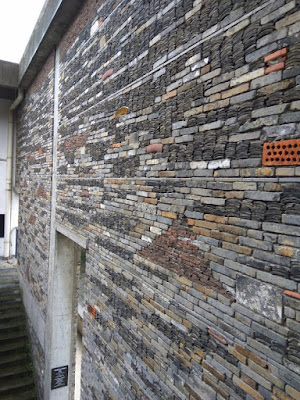The concept
of piezoelectric roads has been around for many years, because of some obvious
reasons this has never be implemented in reality. However, I am surprised that
there are still people, even some academics, come up and propose this idea as
if it’s a real sustainable and renewable energy source, every now and then.
The
piezoelectric effect is where the electric charge accumulates in materials,
such as certain crystal and ceramics, in response to mechanical stress. In
simple words, if such materials are used on the surface of motorway, pressures
and impacts from passing by vehicles can be used for generating electricity.
Estimation
on piezoelectric roads shows that “1 km of runway can produce up to 500 kWh of
electricity per hour” by harvesting “energy from weight, motion, vibration and
temperature changes.” Woohoo! Free, long term and sufficient energy come from
nowhere, must be green and sustainable! But isn’t this something too good to be
true?
If you are
having some doubt like me, you are 100% correct. This is not some magical clean
energy come from nowhere or collected from wastes, this is an energy robbery
from the passing by vehicles, which is essentially non-sustainable fossil
energy.
We all know
there is a certain law called conservation of energy. In order to make the car
to move, the engine burns fuel, convert fossil energy into heat energy, burst
the air and push pistons to convert it into motion
energy, passing such motion through transmission to the wheels, after wasting
much on fiction to the road surface and air, we eventually convert fossil
energy in the fuel into the kinetic energy that moves the vehicle. The
efficiency of the whole process would not be more than 15%, i.e. 85% of the
fossil energy has been wasted in order to push our car to the expected speed.
Now, in order to generate piezoelectricity, the precious
kinetic energy has to be converted back into electricity by adding humps to the
road or increasing the surface fiction and slowing down the vehicle. This is literally
robbing money from the passing-by drivers who paid the fuel for moving their
cars, and in the most inefficient and unsustainable way.
During the
recent study and researches, I have identified that there are many so-claimed
sustainable energy/solutions are actually anti-sustainable. Some need to be
considered from environment impacts of the full life cycle, some simply
decorates non-sustainable methods with fancy names, but the concept of Piezoelectric
Roads is totally a post-truth, i.e. bullshit, that has been repeated many
times. I wonder when can we reach a full stop of this?




























